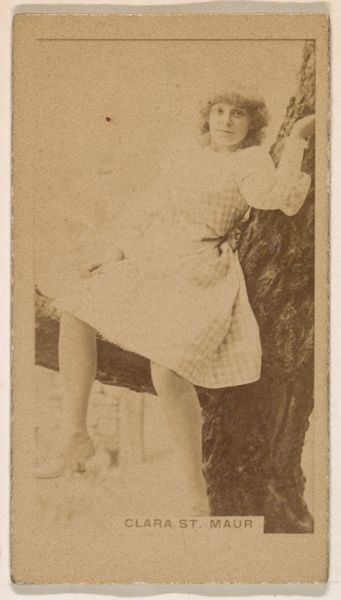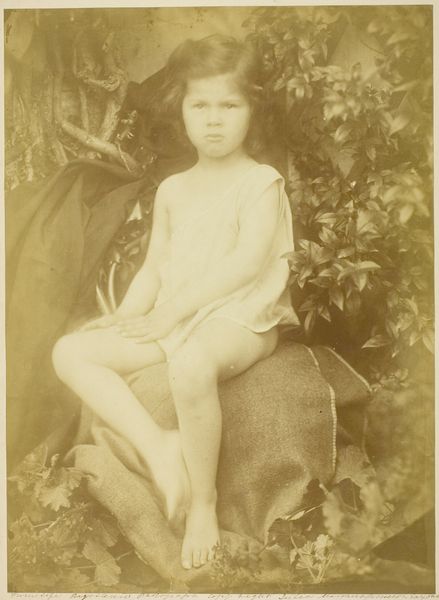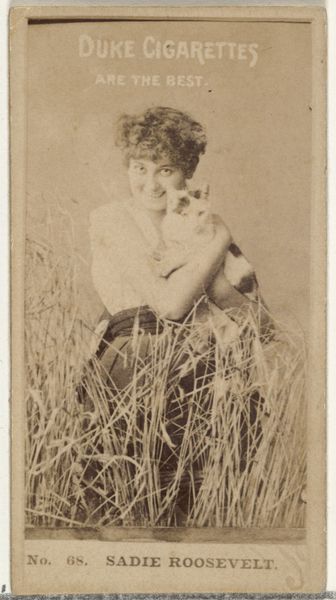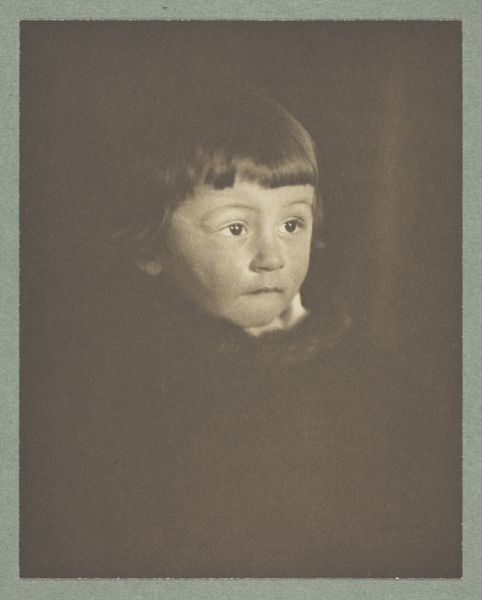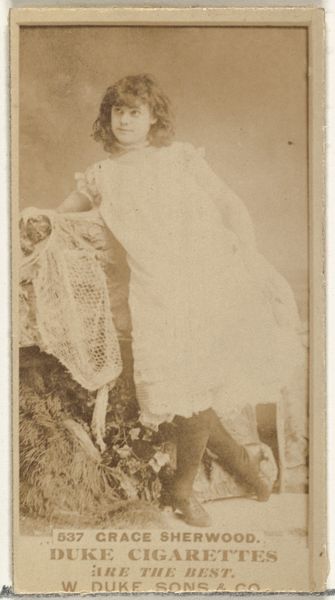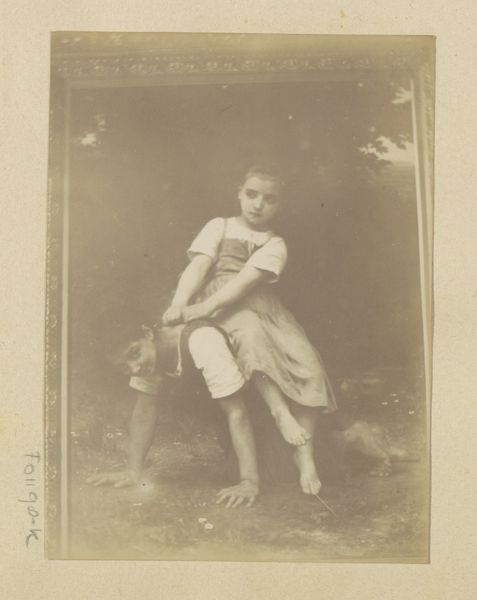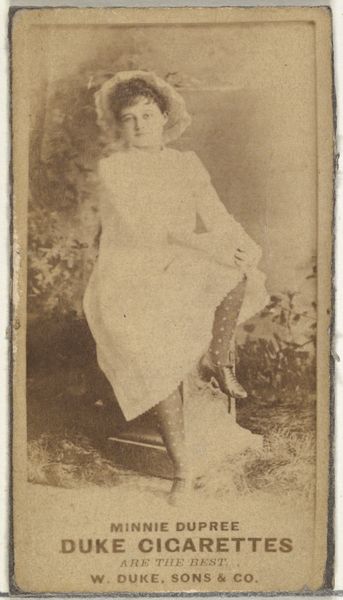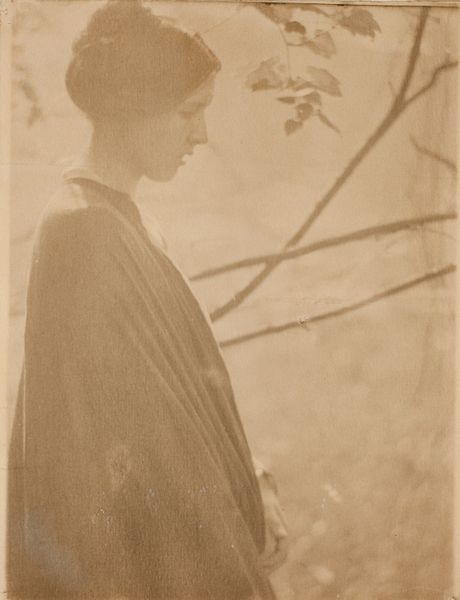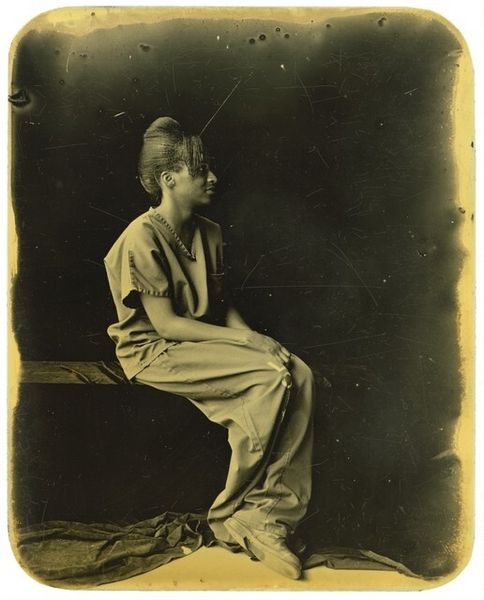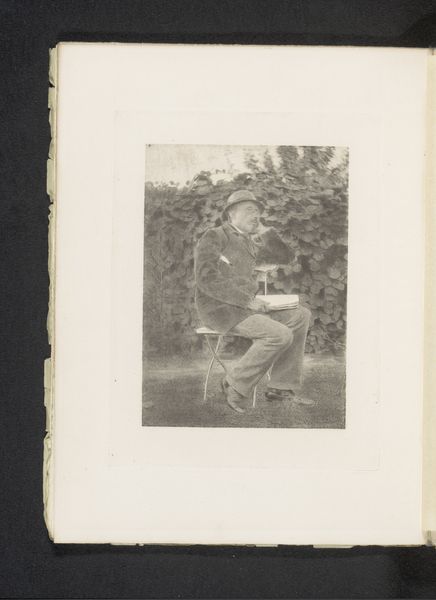
Dimensions: height 222 mm, width 163 mm
Copyright: Rijks Museum: Open Domain
Editor: This sepia-toned photograph, "Portret van een meisje met een eend," by Richard Tepe, made sometime between 1900 and 1930, presents a young girl holding a duckling. It's a very sweet image, but there's a stillness that feels almost staged, like a scene from a play. What historical contexts inform how we understand this piece? Curator: Well, the seemingly casual nature is actually quite deliberate. Looking at it through a historical lens, pictorialism was prominent then. Photographers, like Tepe, sought to elevate photography to the level of fine art. Do you notice anything about the setting? Editor: It seems like she's sitting outside, maybe in a garden? It is a rather indistinct background. Curator: Exactly! That "natural" setting is very deliberately constructed. Tepe carefully controlled elements, blurring the background and focusing on the subject, emulating painting. Also, consider the socio-economic aspect: Who gets their portrait done in that period? Editor: So, the creation of this photo was very deliberate for the photographer but available only for certain class levels. So the public aspect is the photo being posed and produced for social status. Curator: Precisely! The “snapshot aesthetic" that looks realistic actually reflected constructed social ideals. How different is it from contemporary selfies, where social identities are consciously curated? Editor: I hadn't thought of it that way, it puts selfies into a long cultural trend! I learned a lot. Curator: Indeed. And by thinking about it that way, the more we start to see and think about photographs anew.
Comments
No comments
Be the first to comment and join the conversation on the ultimate creative platform.
